Cycling / Mobility / Traffic safety / Urban Mobility Design
Efficiency and Flexibility: Decoding How the Dutch Prioritize Cycling at Traffic Signals
Denmark and the Netherlands both have a long history of prioritizing cycling. But the way this is done at intersections differs between the two countries. This is true not only of geometric design but also of how traffic signals are operated. Fully-protected phases for cyclists are widespread across the Netherlands, but in Denmark, these are seen as less ideal due to reduced efficiency for car traffic. So how do the Dutch manage to prioritize cycling while minimizing delays for other modes?
This article was initially published (partially) in Danish in Trafik og Veje.
The first thing about traffic signals in the Netherlands is that there generally aren’t as many traffic signals in the Netherlands as there are in most other countries. Network planning in the Netherlands often focuses on accommodating a ‘slow but steady’ flow on main roads (a planning principle known locally as LARGAS), which can avoid the need for traffic signals in the first place. Configurations with a single vehicle lane per direction are preferred, allowing solutions such as zebra crossings, bicycle crossings with or without priority, and roundabouts. This reduces delays and stops for cyclists and other road users while still maintaining capacity and allowing safe crosspaths (see Mobycon Academy Short for an example). In addition, over the last decades, local authorities in the Netherlands have systematically converted many signalized intersections into roundabouts with separated cycle paths, as this design proved to provide higher safety, better flow, and lower maintenance costs.
Fully-Protected Phases
Where traffic signals do exist, it is more common for them to have fully protected signal phases for cyclists, which means that when a cyclist has a green light, cars are not allowed to turn across the cycle path simultaneously. While great for safety, the challenge with fully protected signal phases is that they can increase the signal cycle length. As a result, this would increase waiting times for all road users. Danish traffic planners often mention this as a downside of Dutch intersection design and a reason not to bring Dutch designs to Denmark. The Dutch have, however, found ways to mitigate this.
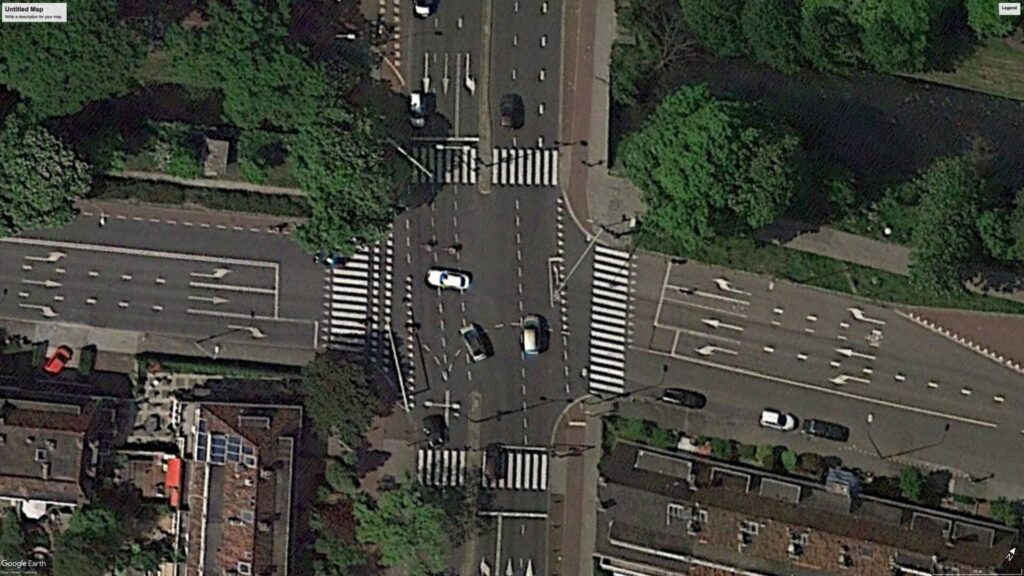
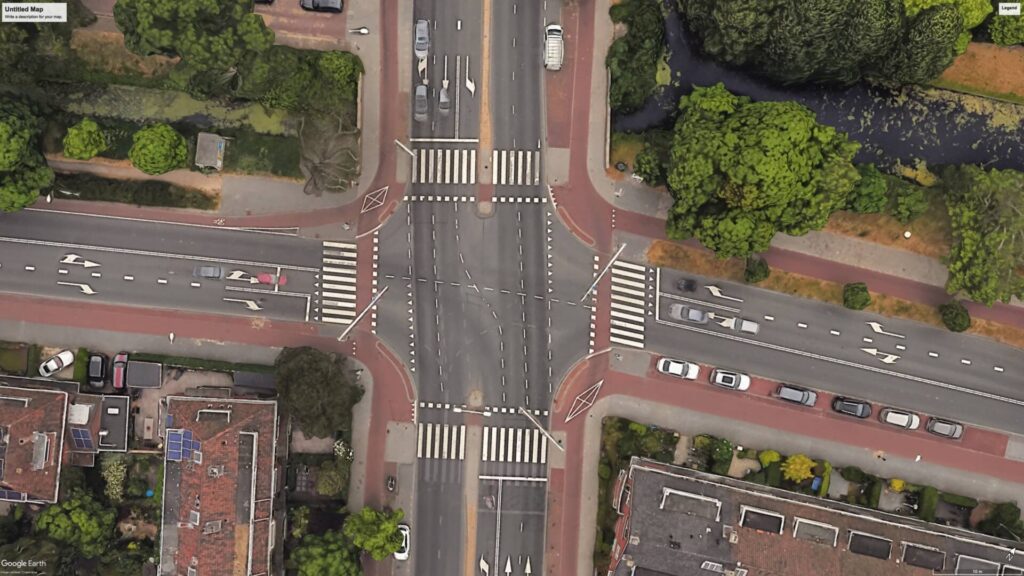
When this intersection in the Hague was converted to a fully “protected design,” the crossing distance was reduced from 17 to 10 meters, which can reduce the required duration of the pedestrian phase by around 7 seconds.
Reducing Crossing Distances and Conflicting Movements
Signalized intersections in the Netherlands are commonly designed with segregated cycle paths. It is a design that has internationally become known as a “protected intersection” (or “kryds med forskudt passage” in Danish). This design aims to keep cyclists separated from motor vehicles as much as possible, as this is more inviting to a broader group of people. But it also has an impact on traffic signal operations. With this layout, the crossings between the footpath and the cycle path are not part of the signal operation. People on foot cross the cycle path freely (with or without a zebra crossing) before and after they cross the motor vehicle lanes. A buffer space between the motor vehicle lanes and the cycle path allows space to wait if needed. Leaving these crossings out of the signal operation reduces the time required for pedestrian phases, reducing the overall signal cycle length.
The protected intersection layout also allows for smooth bicycle flows through the intersection. For example, it becomes possible to display green for north-south and east-west cycle crossings at the same time or shortly after each other, allowing cyclists to turn left without waiting for a second phase. Cyclists making a right turn don’t have to wait for a signal.
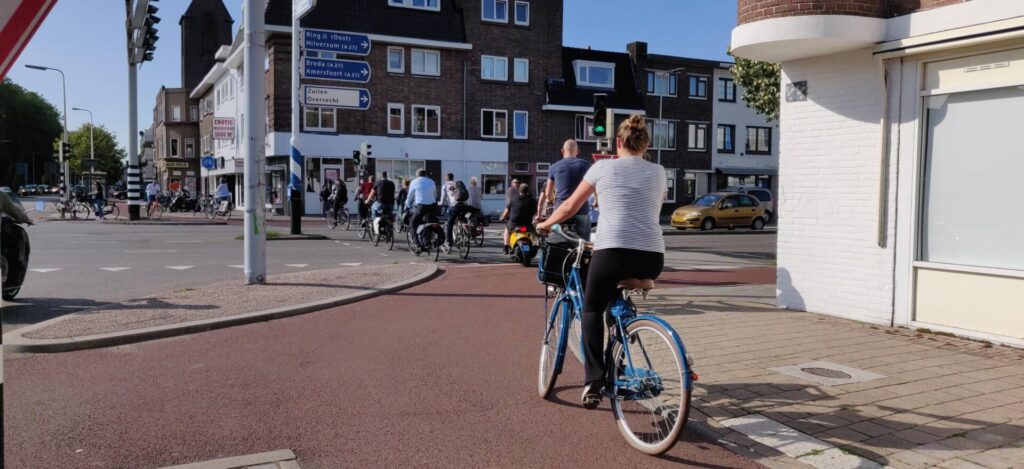
Flexible Signal Phases
Keeping the signal cycle as short as possible is further achieved thanks to the flexibility Dutch traffic signals allow in their phase control. There is an unlimited number of possibilities for phases to be combined. This reduces the chance that a signal displays red while no conflicting road users are present. This is an advantage over fixed or semi-fixed signal timings that average the road users who are expected to approach an intersection during a particular time of day. Dutch signal controllers define the default phase order by grouping phases into “modules” of non-conflicting movements. However, the transition from one phase to another occurs as soon as conflicting movements end in real time. This allows movements in the following module to start early if the conflict matrix and manual constraints allow it. That enables otherwise unused time to be more effectively reallocated, which minimizes unnecessary waits.
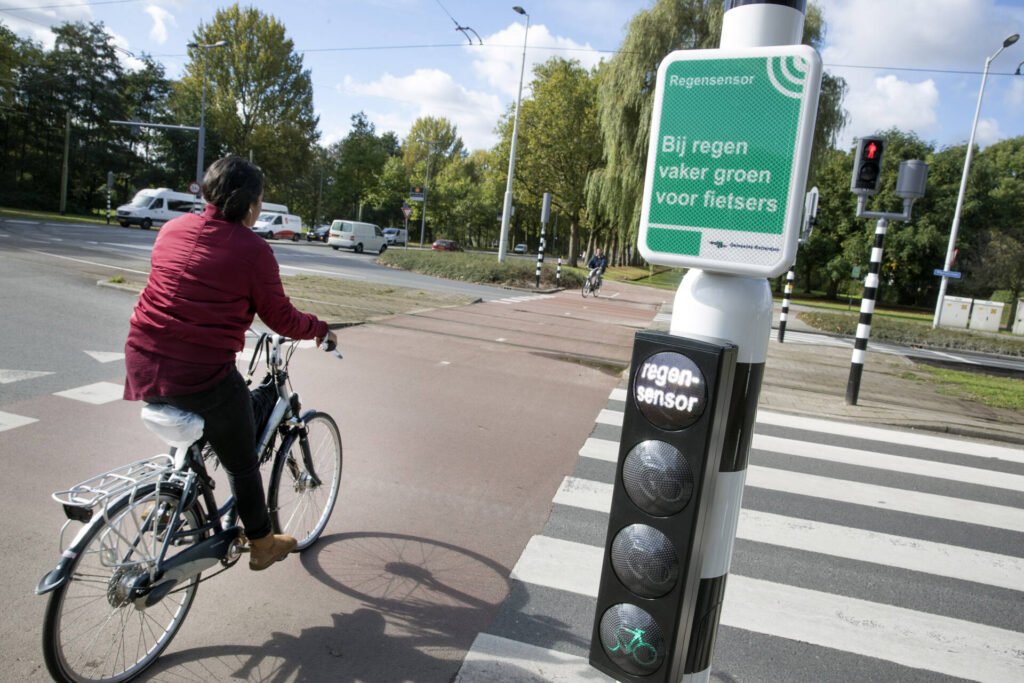
Respond to Real Time Detection
For flexible signal phases to work effectively, Dutch traffic signal controllers have to tailor signal phases to the movement of people at the intersection in real-time. Proper detection is crucial for this. Signalized intersections in the Netherlands typically have multiple detectors per lane. The one closest to the stop line is used to ensure that the signal knows when someone is waiting at the traffic signal. The next more extended detector determines when the vehicle queue has cleared. The furthest detector is used to call the signal phase and potentially extend the green phase to accommodate any approaching vehicles.
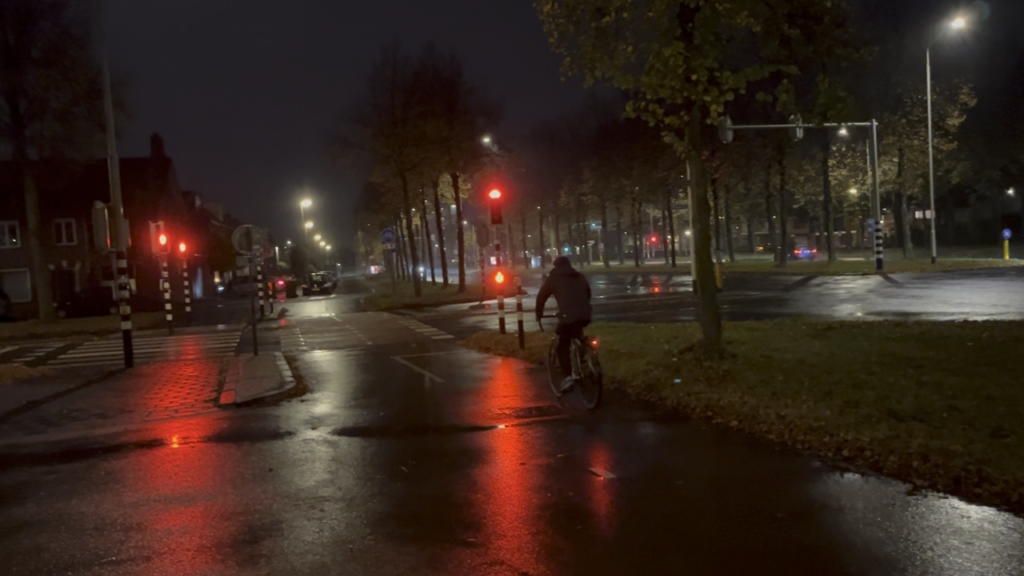
The precise detection allows a signal to change precisely when a queue has cleared, with the yellow ideally starting one second before the last vehicle reaches the stop line – minimizing the wasted time between phases. This does not only apply to cars. Real-time detection is also used for cyclists. It is common for cycle paths to have at least two detectors, one at the stop line and one 5 seconds upstream. This way, approaching bicycles can get a green light before they even stop, or a green light can be extended for an approaching cyclist. It is becoming increasingly common to use cameras or dual detectors to measure cyclists’ speed, which allows bicycles to be detected even further ahead of the intersection, with green extensions optimized for the actual speed of the cyclist and features such as prioritizing groups of approaching cyclists.
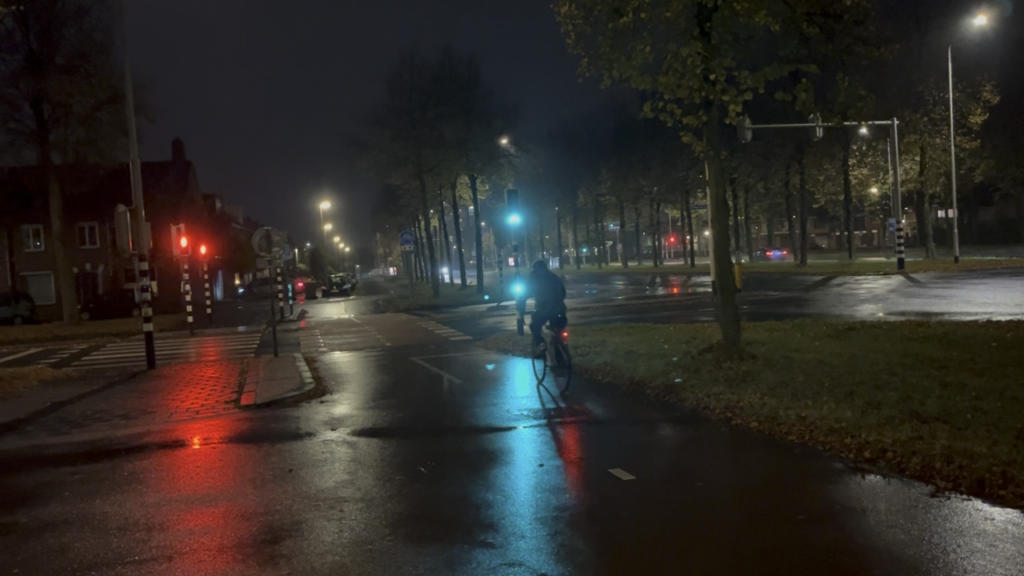
Application in Other Countries
Signal operation and intersection design go hand in hand. Some of these techniques to prioritize cycling and reducing waiting times would only work if the protected intersection design would be more widely adopted. However, flexible signal phasing and improved detection can help to minimize signal cycle lengths at existing signalized intersections. Shorter signal cycle times benefit all types of cyclists, pedestrians, and drivers since they are tailored to whatever speed people are traveling. However, sometimes it can also be worth considering whether a traffic signal could be replaced with a better solution that doesn’t require cyclists to stop.
This article was initially published (partially) in Danish in Trafik og Veje.
Are you curious about a more in-depth explanation of Dutch traffic detectors? Check out our video on Dutch traffic signals here.

